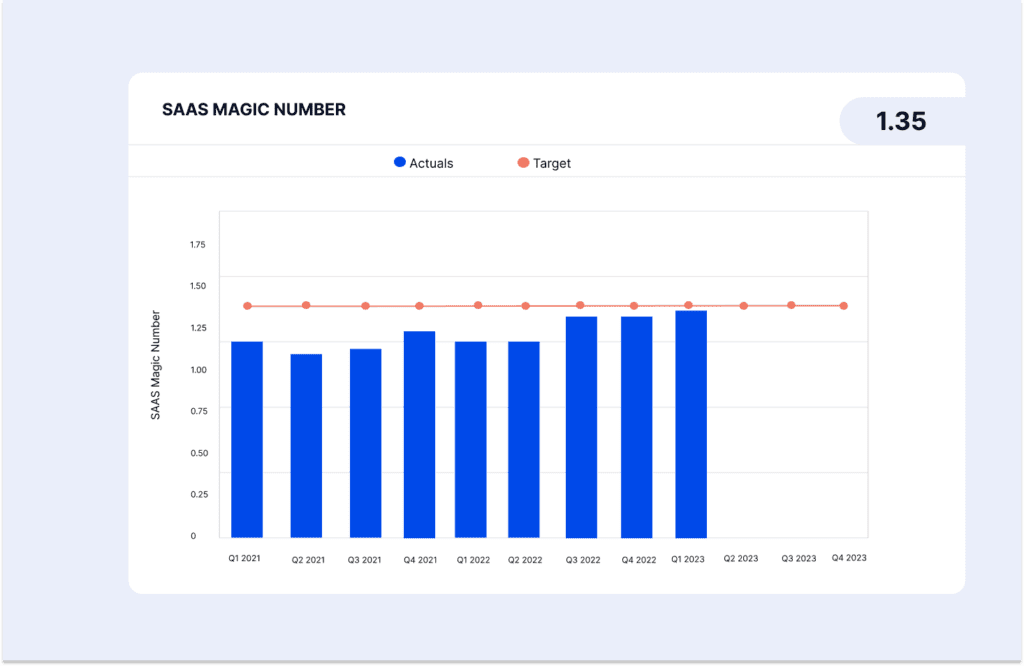Ready to transform data to insight?
Getting started with ScaleXP is easy! Try it for yourself with a 7 day free trial and get set up in minutes. Or, if you’d like to take a deeper dive, book a demo at a time that suits you.

SaaS Magic Number is a measure of growth or sales efficiency which is built from the revenue growth rate and the cost of acquiring new customers.
The formula for SaaS Magic Number is annualised Revenue Growth divided by Customer Acquisition Costs. The measure can be calculated using the most recent annual results (sometimes called trailing twelve months, or TTM) or a shorter, annualised, time period. Here we show the calculation for a full year. In this case we assume that the benefit of sales and marketing cost is attained within the same period as it is spent, but a widely accepted alternative calculation is to use spend in the month prior to the new sales generation.

As an example, if you spend $1000 on marketing in 2022, and revenue increases by $2500 in the year, the Magic Number will be 2.5. This implies that you more than paid back the acquisition costs in one year; you paid them back by 2.5x, at least in terms of sales before any associated costs.
A higher Magic Number is better.
A SaaS magic number below 1 indicates that the company needs longer than a year to recoup the cost of acquiring a new customer. If customers are sticky and stay for many years and Gross Margin is high, this may not be a cause for concern.
A magic number below 0.5 usually indicates that it is too early to invest in sales and marketing.
This being said, it is important to keep in mind that the SaaS magic number can vary over time driven by a wide range of factors including the cost of acquiring new customers, the ability to cross-sell to existing customers, net dollar retention, even churn. The Magic Number is just one financial metric and should be considered in the context of a company’s overall financial performance and business model.
The SaaS magic number can vary widely depending on the industry and business model. Magic Numbers are much harder to compare across companies. If you are looking for comparable and widely researched benchmarks, CAC Payback may be a better measure of sales efficiency.
Rather than using external benchmarks, it is more useful to compare a company’s SaaS magic number to its own historical performance or to the performance of similar companies in the same industry.
As a very rough rule of thumb:

ScaleXP fully automates SaaS Magic Number calculations. Data is compiled automatically from your accounting or financial system. Your internal budgets, targets, and forecasts are automatically added to the graphs. All you need to do is share the insights with your team, click here to learn more.

Measures growth in revenue from a group of customers. Typically split into upgrades, downgrades, renewals and losses.

Measures how long it takes for a company to recoup the costs of acquiring a new customer.

Percentage increase in MRR over a certain period of time, most typically a quarter or a year.
Getting started with ScaleXP is easy! Try it for yourself with a 7 day free trial and get set up in minutes. Or, if you’d like to take a deeper dive, book a demo at a time that suits you.
© 2024 ScaleXP | All Rights Reserved Company Number: 11447363
